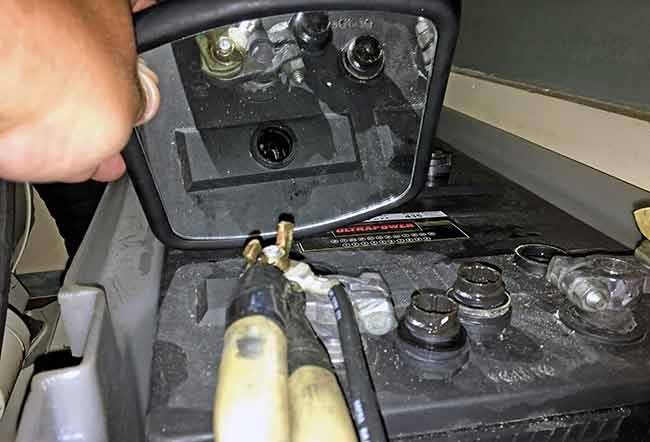
A digital multimeter is a handy tool to accurately check the charge of your battery. Set the meter to DC volts. The meter likely has different ranges, but the 20-volt scale is probably appropriate for typical marine batteries. Place the probes onto the battery terminals and note the reading. A slight difference in the numbers can have a big effect on the battery performance.
- 12.65 to 12.77 volts indicates your battery has a full charge
- 12.45 to 12.54 volts means you have a 75-percent charge
- 12.24 to 12.29 volts is 50-percent charged
- 11.99 to 12.06 volts is 25-percent charged
- 11.75 to 11.89 volts means your battery is dead
Batteries must be correctly mounted for them to give safe and effective performance. A shifting battery could contact some metal part of the boat and cause a short circuit that starts a fire. All batteries should be secured in an acid-proof box or tray to contain spills. A box also isolates the battery from physical harm that could split the case and cause acid to leak out. Positive terminals should be covered as well. Most boxes have covers that serve this purpose.
Charging Batteries
The best thing that you can do for your batteries is to keep them properly charged. All batteries will self-discharge if left to sit. The discharge rate varies depending on the type, size, and age of the battery. A lead-acid battery may lose 5 percent of its charge per month, so it's important that a battery not used for some time, over the winter for instance, is periodically charged to bring it up to full capacity.
How a battery is charged is critical to its health and longevity. Both overcharging and undercharging will reduce the battery's lifespan and degrade its performance. If you use a cheap auto-parts-store battery charger, there's a chance you could severely overcharge or "cook" off the electrolyte, ruining the battery. BoatUS recommends a marine smart battery charger, which is designed for permanent installation, can safely be left connected to the batteries, and will automatically reduce the charge to avoid overcharging.